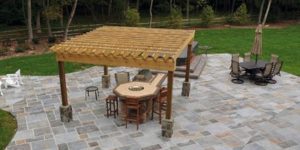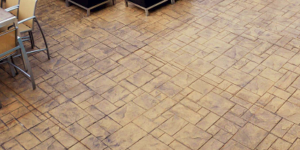A number of years ago, when all of our kids were still at home, we purchased a ski boat. We loved being out on the water as a family wakeboarding, wake-surfing and making countless memories. It was time well invested and money well spent.
One of the biggest lessons learned from my experience as a boat owner came from my neighbor down the street. When he saw our new boat parked in the driveway, he said, “Make sure you have a system.”

Systems at play
In my excitement to “get out on the water,” I barely gave it a second thought, when he soon repeated, “You need to follow a system.” He explained the importance of having a system or procedure for my boat. A system would ensure the boat was always prepped and ready to go, he said, and would reduce the risk of any unforeseen incidences.
My system went something like this: Make sure the drain plug is in place. Have towels on board to wipe down the boat after boating. Fill gas tank.
After putting the boat in the water, it was: Adjust mirror. Turn on exhaust blower. Start motor.
When we were finished boating it went something like this: Trailer the boat. Remove the drain plug to let out excess water. Wipe down boat completely and clean the glass. Drive home. Fill gas tank. Put drain plug back in place. Resupply wipe-down towels and put cover on boat.
This may seem like a lot of work but having a system made for a stress-free and fun boating experience.
Conversely, one evening we were out boating and saw one of our friends racing toward the shoreline with his boat low in the water and panic written across his face. You guessed it. He had forgotten to put in the drain plug. We still laugh about that evening, but it could have ended badly. The lack of a system could have cost him much more than the good-natured ribbing that he now must endure from his friends.

Systems at work
The decorative concrete industry is one that has, at times, been described as “high risk, high reward.” While at face value I tend to agree with this statement, there are several things that we can do to reduce the risk while still realizing the reward.
For example, we know there’s a procedure, or system, that most concrete contractors use while finishing typical gray concrete. Namely: Placing and striking off or screeding the concrete, floating, working the edges, fresno-floating, steel-troweling, saw cutting, and applying a cure or a cure-and-seal product. Obviously, there are slight variations and/or modifications that occur, but you get the picture.
With decorative concrete, both the risk and the reward factor rise exponentially depending on the type of work being done and the level of skill required to complete the project on time, on budget and up to the expectations that you have helped establish.
Fortunately, manufacturers of decorative concrete products have been dealing with this scenario from the onset of the decorative age and can now produce products as part of a system for every step of the process. It is kind of like “painting by numbers.” You know, every number requires the use of a certain color and if you follow the “system” you end up with a picture of the Mona Lisa.
Consistent results
Just like paint by numbers, the premise is the same with decorative concrete products. Nearly every manufacturer of decorative concrete products has a “systems approach” to assist the contractor on every project. For example, an acid stain project requires proper surface prep products and deep cleaners before applying the acid stain, followed by a neutralizing agent, a sealer and, if used indoors, a maintenance sealer on top for protection.
For a colored grind-and-polish project, preparatory products are needed for cleaning. You also need a dye or other coloring agent, a densifier and a guard product on top for protection.
A systems approach helps architects specify a system of products that they can trust as it provides a single-source liability. Contractors can use this system with confidence, knowing that one manufacturer can produce a system of compatible products that has been tried and tested together.
It eliminates that ugly scene on the job site that we have all probably seen or been a part of where the owner of the project is standing there in frustration, while the various product manufacturers, along with the contractor, stand around in a circle pointing fingers at each other while saying something to the effect of “It’s not my fault. You didn’t use the system.”
Don’t be like my friend who forgot to put the drain plug in his boat and had to make a beeline for the shore to save his family and boat. Use a systems approach. The laws regarding VOCs are constantly changing and manufacturers are forced to adjust and change with the times. That’s why it is doubly important to work within a manufacturer’s systems approach, as they are aware of the changes and keeping their products compatible with each other within their system.
For every type of decorative discipline, there is a “systems approach” of products produced by most manufacturers. This helps all parties involved to produce the best possible result and realize the greatest of rewards.
















